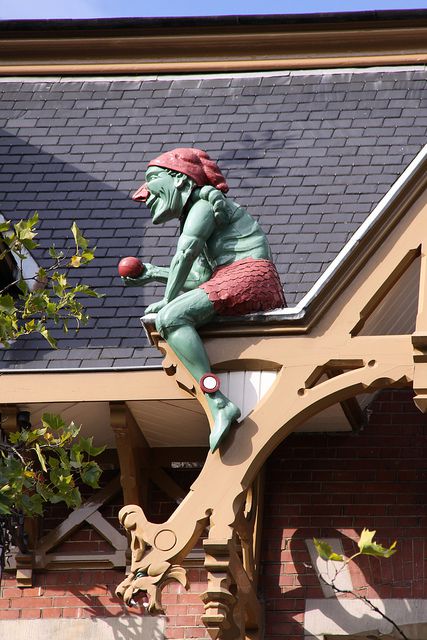

Just off the Amsteldijk, at Ceintuurbaan 251 stands a curious building with
the two gnomes at its cornice. The house with the gnomes is the creation of the architect Boersma and was completed in 1884. One special feature of this house is the curious combination of neo-Gothic elements, such as the pointed arches and the gargoyles, with such Neo-Renaissance elements as cross windows and doorframes, the use of stone and the ornate woodwork of the projecting caps. The most striking element is of course the two gnomes at the height of the cornice engaged in a game of tossing a ball to one another. One legend states that the two gnomes symbolize the two contractors who assisted one another when constructing this building. Another tale claims that the name of the original customer's name was Ballegooijen, which translates into English as Ballthrower.
It should be mentioned here that during Napoleon's 4-year rule over the Netherlands, when his brother was appointed as the king and resided in the former Town Hall, which he renamed into Royal Palace on the Dam, one of the French emperor's innovations was to assign the Dutch people last names. The story goes that many of the recalcitrant Dutch did not take this new measure very seriously, convinced that once Napoleon will have been defeated, everything would turn back the way it used to be before the invasion. Firmly believing in this notion, many of the local folk went to the registrar's office and registered under comical last names, thus mocking the new regime and its regulations. However, when Napoleon was at last defeated, the new Dutch authorities decided to keep the last names as well as other French innovations, such as, for example, house numbering. (Before Napoleon, ceramic plates depicting a house owner's trade, profession or their family's coat of arms served that purpose). To this day, 5-7% of the population in the Netherlands possess bizarre last names - such as the one the original owner of the building may have had - that date back to this curious historical event.